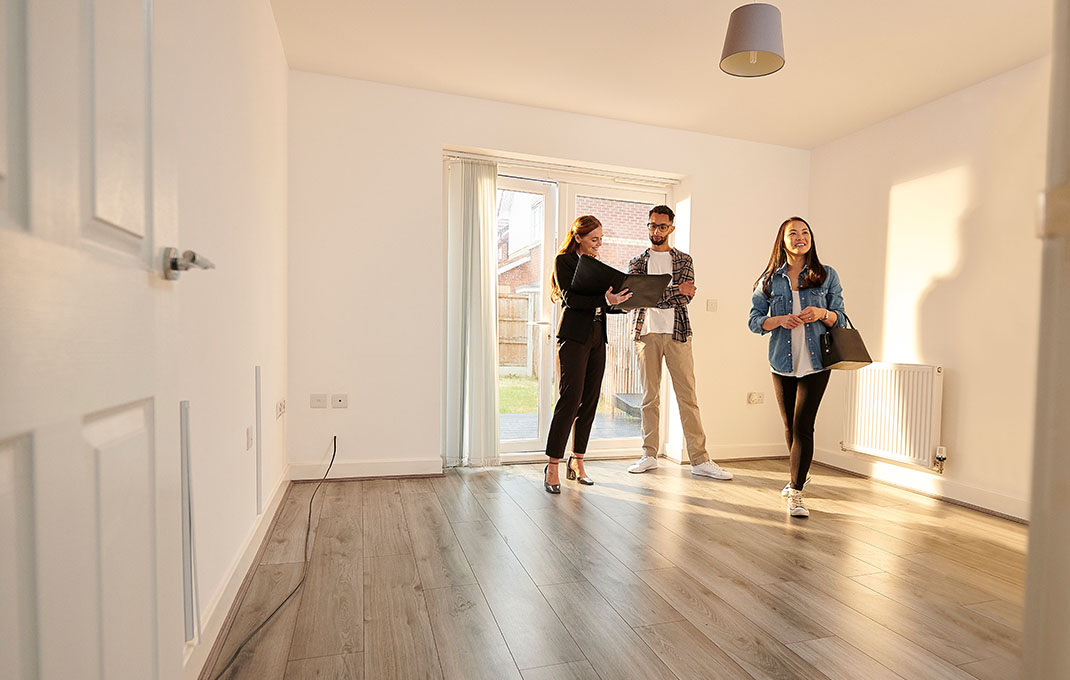What is a Home Mortgage?
Whether you’re getting ready to buy your first home or you’re just wondering what a home mortgage is and how it works, you’ve come to the right place. Norway Savings Bank has been helping our communities for the past 157 years —you might say we have some experience in mortgages!

OK. So what is a home mortgage?
A home mortgage, often referred to simply as a mortgage, is a type of loan to finance the purchase of a home or property. It is a legal agreement between the borrower (homebuyer) and the lender (usually a bank or mortgage company) where the lender provides funds to the borrower to purchase a home. In return, the borrower agrees to repay the loan over a specified period of time, typically with interest.
Check out our Financial Calculators
What else do I need to know about mortgages?
Now you know a mortgage is a type of loan that lets you borrow money from a bank or mortgage company in order to buy a home. That’s a great start, but in order to fully understand the ins and outs of mortgages, you need to know some terms. These will help you better understand how a mortgage works.
Mortgage terms to know
Down Payment
The down payment is the initial amount paid by the borrower in cash toward the purchase price of the home. It is usually a percentage of the property’s value and can range from 3% to 20% or more, depending on the lender and loan type.
Loan Amount
The loan amount is the total sum of borrowed money needed to purchase a home. It is generally a percentage of the property’s value, with the remaining amount paid as a down payment.
Interest Rate
When you borrow money from a lender, you repay the borrowed amount as well as an additional amount, known as “interest.” The interest rate determines the percentage of the loan amount that you’ll need to repay as interest over the mortgage’s duration. A higher interest rate means you’ll have to pay more in interest, making borrowing more expensive. A longer term loan also means you will pay more interest over the course of repayment.
The interest rate is the cost of borrowing money when purchasing your home. Interest is the percentage of the mortgage balance that is paid back, along with the principal balance, over the loan term.
The interest rate can be fixed, which means it stays the same for as long as it takes to pay back the loan, or adjustable, which means it may fluctuate over the term of the loan.
Loan Term
The loan term is the duration over which the borrower will repay the loan. Common terms are 15, 20, or 30 years, although other options may be available. The longer the term, the lower the monthly payments – but – the higher the total interest paid over the life of the loan.
Collateral
Collateral is something that acts as security for the lender in case the borrower is unable to finish paying back the money they borrowed. In a home mortgage loan, the property being purchased serves as collateral for the loan. If the borrower fails to make the required payments, the lender has the right to seize the property through foreclosure and sell it to recover the outstanding debt. That being said, reputable mortgage lenders work hard to make sure you have the proper income to afford your monthly payments.
Closing
Closing, in the context of a mortgage, refers to the final stage of the homebuying process when the legal transfer of ownership of the property takes place. During the closing, the buyer and seller, along with their respective representatives, gather to complete several important tasks, including the signing of legal documents and the exchange of funds.
Closing Costs
Closing costs are the fees and expenses associated with finalizing the mortgage loan. They typically include loan origination fees, appraisal fees, title insurance fees, and other costs associated with getting a mortgage. Closing costs are usually paid by the borrower at the time of closing.
Amortization
Mortgage loans are typically amortized, meaning that the payments are set up so that the borrower gradually pays off both the principal (the original loan amount) and the interest over the loan term. Initially, a higher proportion of the monthly payment goes towards interest, but over time, a greater portion goes towards reducing the principal balance.
Mortgage Pre-Approval
Before searching for a home, borrowers can seek a pre-approval from lenders. A pre-approval involves an evaluation of the borrower’s financial information and creditworthiness to determine the maximum loan amount they qualify for. It provides a clearer understanding of the budget and strengthens the buyer’s position when making an offer.
Private Mortgage Insurance (PMI)
If the down payment is less than 20% of the home’s purchase price, lenders may require Private Mortgage Insurance, also known as PMI. PMI is a type of insurance that helps protect the lender from losses if a borrower defaults on the loan. PMI adds an additional cost to the monthly mortgage payment until the borrower reaches a certain level of equity in the home. PMI can also be seen as a tool for borrowers to reach a reasonable level of affordability when purchasing a home. It can be used as an alternative to bringing a large sum of cash to closing.
Refinancing
Homeowners have the option to refinance their mortgage, which involves paying off an existing loan and replacing it with a new one. Refinancing can be done to secure a lower interest rate, change the loan term, switch from an adjustable-rate to a fixed-rate loan, or access the equity in the home.
Putting it all together
At this point, you understand many of the terms associated with home mortgages. Let’s put those terms to work in an example, so you can see how they fit together.
Suppose you want to buy a house. The market is pretty competitive and you want to know how much house you can afford, so you go to a lender like Norway Savings and get pre-approved for a mortgage. Your lender looks at your credit history, existing debt, savings, and income, and lets you know that you are pre-approved in the amount of $110,000.
You begin looking for a house and find one you like that’s for sale for $110,000. You’ve saved $10,000 and use that as a down payment, so your loan amount is $100,000. You look at available mortgages and decide on a mortgage with a loan term of 30 years that has an interest rate of around 7%.
Because your down payment is under 20%, your lender asks that you get private mortgage insurance. You close on your house (where you pay closing costs) and move in. Four years later, you notice that interest rates have decreased, and you decide to refinance your mortgage and get a new 15-year mortgage at around 5%, which in turn helps minimize your total interest paid.
Mortgage products, regulations, and requirements can vary by state, lender, and loan product. It’s important to consult with local lenders to get accurate and up-to-date information about home mortgage loans in your area.
To learn more about mortgages, read What Are the Different Types of Mortgage Loans?
Norway Savings Bank MortgageGO
At Norway Savings Bank, we understand every homeowner has unique needs and circumstances. With Norway Savings Bank MortgageGO, you can find a mortgage that’s just right for you. Not only will you get competitive rates, you’ll get a supportive dedicated local mortgage professional that will help you every step of the way and technology that makes applying on the go easy. So let us help you find the right mortgage for you! Check out MortgageGO or contact a mortgage loan officer.



